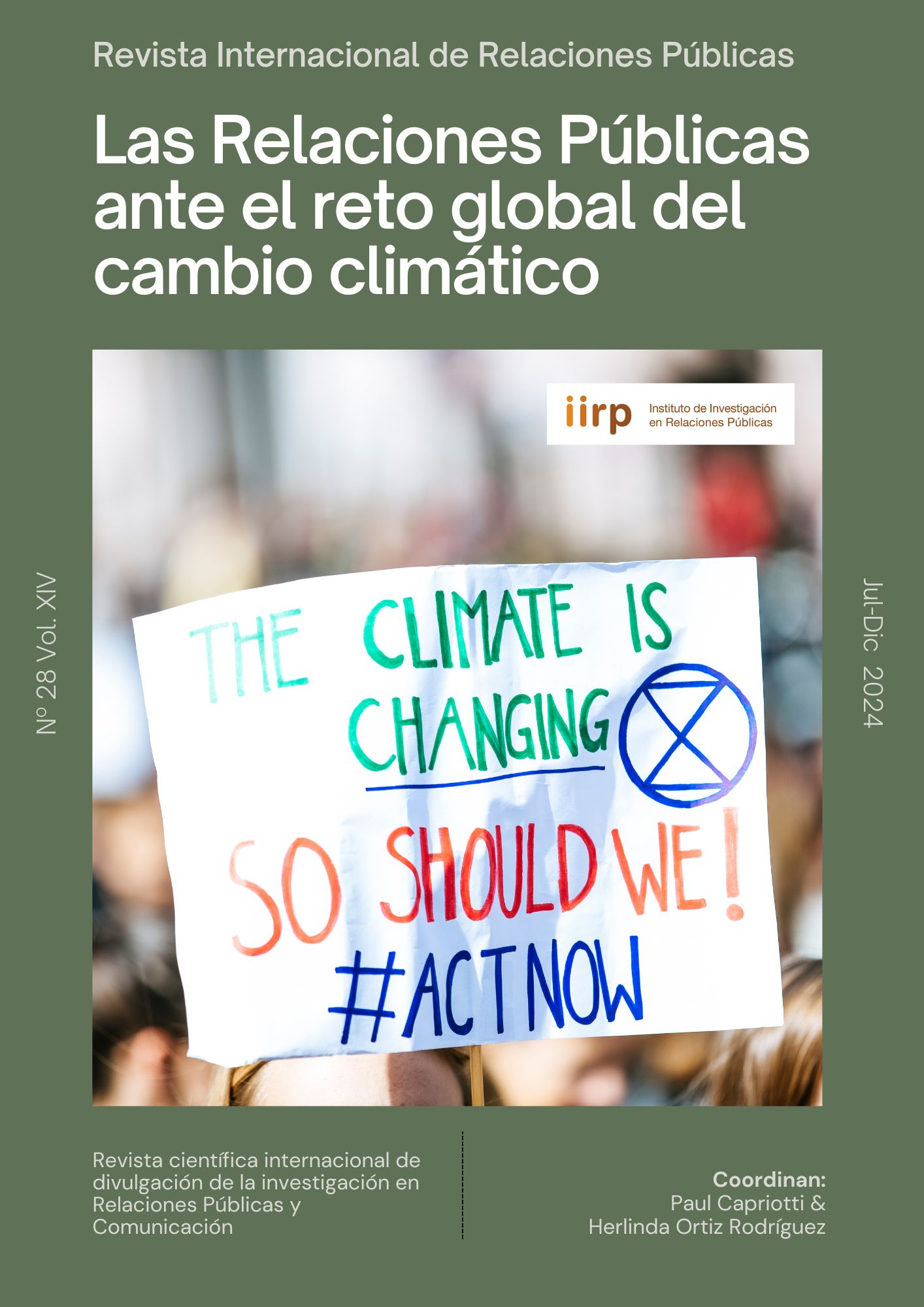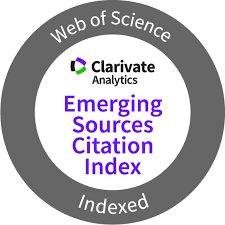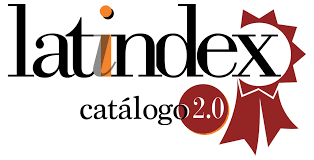Digital Communication Strategies for Heritage Conservation: Analysis of Management in the Office of the Cienfuegos Conservator
DOI:
https://doi.org/10.5783/revrrpp.v14i28.877Keywords:
heritage communication, content strategies, social networks, cultural identity, digital environmentAbstract
This article investigates the communication strategies employed by the Office of the Conservator of Cienfuegos (OCCC) to promote heritage values and cultural identity through social media and digital platforms. As digital transformation reshapes communication in heritage management, there is an increasing emphasis on understanding how these tools can support the preservation, dissemination, and educational promotion of heritage sites. The study employs a mixed-methods approach, combining qualitative interviews with experts and OCCC communication managers, and a quantitative content analysis of the OCCC’s social media activity, primarily focused on Facebook. Through this dual approach, the research offers insights into the effectiveness of current digital strategies, identifies challenges, and provides recommendations for strengthening the OCCC’s impact on its audience.
The study begins by establishing the essential role of communication in heritage management. In Cienfuegos, a city recognized for its historic and cultural significance, the OCCC plays a central role in safeguarding and promoting heritage sites. Communication in this context is not only about sharing information but about building a narrative that reinforces local and national identity. Interviewees expressed a shared understanding of the importance of cohesive communication strategies across all Cuban heritage cities, stressing that a unified approach can enhance national and international visibility. Despite the progress made, interviewees noted persistent gaps, especially in ensuring equal representation across all heritage sites, as some cities receive greater attention due to their historical prominence.
A significant part of the research focuses on the use of social media by the OCCC. The study examines the Facebook profile of the OCCC, assessing both follower engagement and content variety. While the OCCC’s profile has a steady following and generates interactions, the study found that content lacks consistency and depth, suggesting that a more structured social media strategy could improve public engagement. Increasing posting frequency and introducing interactive content that encourages user participation are recommended to foster a more dynamic online presence. Interviewees agree that a digital strategy focused on more interactive and valuable content would contribute to developing a community of engaged followers who can act as cultural ambassadors. Furthermore, the inclusion of analytics tools to track content performance and audience engagement is suggested to guide future strategies more effectively.
The research also underscores the fundamental role of the digital environment in heritage communication. Both experts and OCCC staff agree that digital platforms are essential for engaging local and international audiences with heritage values. The study notes that adapting to these platforms requires a dual focus: on the one hand, promoting cultural tourism to stimulate local economies, and on the other, educating audiences about the intrinsic value of heritage beyond tourism. Experts emphasize that social media should not merely function as a promotional tool but as an educational medium that fosters appreciation for cultural identity. They recommend a balanced approach that avoids the risk of over-commercializing heritage while emphasizing the preservation of authentic cultural and historical narratives.
To further enhance the OCCC’s communication impact, the study suggests diversifying digital communication channels beyond Facebook. Experts propose the inclusion of visual and interactive content on platforms, as well as the use of digital repositories or forums for scholarly discussions and multimedia exhibitions. This diversification would expand the OCCC’s reach and create a more enriching experience for audiences, aligned with the evolving expectations of digital communication. Additionally, interviewees highlight the importance of collaborative networks among heritage institutions, advocating for joint initiatives to enhance the professionalization of heritage communication and share best practices. Such collaboration could optimize resource use and reinforce a unified message that promotes Cuba’s cultural heritage on both regional and national levels.
Downloads
References
Armenteros Moya, D. R. & Martín Menéndez, A. (2023). Estudio Comparativo de Gestión de Comunicación del Patrimonio entre las Ciudades Cienfuegos y Córdoba, Patrimonio de la Humanidad. Universidad y Sociedad, 15(S1), 187-197.
Alonso, M. M., & Saladrigas, H. (2000). Para investigar en Comunicación. Guía didáctica. La Habana: Pablo de la Torriente.
Bazaga Sanz, R. (2017). El diseño gráfico como vehículo de difusión del patrimonio arqueológico. Propuesta para la creación de un recurso digital. TELOS: Revista de Pensamiento sobre Comunicación, Tecnología y Sociedad(106), 112-120. https://bit.ly/40oi8JR
Barreto, Anier & Ruiz, Ricardo & Rodríguez, Ramón. (2023). Hoja de ruta para la difusión del patrimonio fotográfico en archivos, bibliotecas y museos de la ciudad de Santa Clara (Cuba). Ibersid: revista de sistemas de información y documentación. 17. 49-62. https://doi.org/10.54886/ibersid.v17i2.4927
Barrientos-Báez, A., Caldevilla-Domínguez, D., & Félix Mateus, A. (2023). Immer-sion in the digitalization of social networks in tourism and heritage: a paradigm shift. Anuario Electrónico de Estudios en Comunicación Social Disertaciones, 16(1). 1-12. https://doi.org/10.12804/revistas.urosario.edu.co/disertaciones/a.12399
Bellido Gant, M. (2013). Los museos y los nuevos mediios: paradigmas del conocimiento y la difusión. Boletín de la Sociedad de Amigos de la Cultura de Vélez-Málaga (12), 27-30. https://bit.ly/4fu8VDU
Besó, Adrià. (2020). Redes sociales y patrimonio. Una aproximación desde la historia de la difusión de los bienes culturales. Revista PH. https://doi.org/10.33349/2021.102.4823
Campillo-Alhama, C., & Martínez-Sala, A.-M. (2019). Events 2.0 in the transmedia branding strategy of World Cultural Heritage Sites. Profesional De La información, 28(5). https://doi.org/10.3145/epi.2019.sep.09
Cancelo Sanmartín, M. y Almansa Martínez, A. (2013). Estrategias comunicativas en redes sociales. Estudio comparativo entre las Universidades de España y México. Historia y Comunicación Social, 18. Nº Especial Diciembre. 423-435. http://dx.doi.org/10.5209/rev_HICS.2013.v18.44339
Cano-Tenorio, R.; RostolL-Ariza, J. (2018). Uso de las redes sociales en los museos internacionales. Revista de la Asociación Española de Investigación de la Comunicación, 5(9), 41-49. http://dx.doi.org/10.24137/raeic.5.9.6
Cardet García, J. J., Arellano Paredes, D. I., & Viteri Jaramillo, G. A. (2023). Gestión y comunicación del patrimonio: Estrategias para un turismo sostenible en el Centro Histórico de Pasa. Ecuador. Módulo Arquitectura - CUC, 30, 127–170. http://doi.org/10.17981/mod.arq.cuc.30.1.2023.05
Carreras, C., Munilla, G., & Solanilla, L. (2003). Museos on-line:nuevas prácticas en el mundo de la cultura. Patrimonio Histórico, 46, 68-77. https://doi.org/10.33349/2003.46.1631
Castells, M. (2008). Creatividad, innovación y cultura digital. Un mapa de sus interacciones. TELOS: Cuadernos de Comunicación e Innovación, 77, 50-53. https://bit.ly/3AoftFg
Capriotti, P. (2008). La planificación estratégica de la comunicación del patrimonio cultural. En S. M. Mateos Rusillo. La comunicación global del patrimonio cultural, 133-154. TREA, S.L.
Capriotti, P., & Zeler, I. (2020). Comparing Facebook as an interactive communication tool for companies in LatAm and worldwide. Communication & Society, 33(3), 119-136. https://doi.org/10.15581/003.33.3.119-136
Creswell, J. W., Plano Clark, V. L., Gutmann, M. L., & Hanson, W. E. (2003). Advanced mixed methods research designs. In A. Tashakkori & C. Teddlie (Eds.), Handbook of mixed methods in social and behavioral research. Thousand Oaks, CA: Sage. 209–240.
Dávila Lorenzo, M. (2018). Modelo de gestión de comunicación pública del patrimonio para la Oficina del Conservador de la Ciudad de Cienfuegos [Unpublished doctoral dissertation]. Universidad de la Habana.
Galarza Fernández, E.; Villena Alarcón, E. y Sosa Valcarcel, A. (2020). Funcionalidad turística de la gestión de la comunicación en redes sociales de museos de Málaga. Doxa Comunicación, 30, 309-330. https://doi.org/10.31921/doxacom.n30a16
Hernández Sampieri, R., Fernández-Collado, C., & Baptista, M. P. (2006). Metodología de la investigación (4ª ed.). McGraw-Hill. https://bit.ly/4hwMq32
Krippendorff, K. (1990). Metodología de análisis de contenido: teoría y práctica. Paidós Comunicación.
Losada-Díaz, J. C., & Capriotti, P. (2015). La comunicación de los museos de arte en Facebook. Comparación entre las principales instituciones internacionales y españolas. Palabra Clave, 18(3), 889-904. http://dx.doi.org/10.5294/pacla.2015.18.3.11
Marcelino Mercedes, G., & de la Morena Taboada, M. (2014). Redes sociales basadas en imágenes como herramienta de comunicación museística. Museos y centros de arte Moderno y Contemporáneo de España en Pinterest e Instagram. AdComunica. Revista de Estrategias, Tendencias e Innovación en Comunicación, 153-181. https://doi.org/10.6035/202
Mariano, C. I., & Conforti, M. E. (2013). Del registro al patrimonio, un camino con curvas cerradas. Gestión del patrimonio arqueológico y comunicación pública de la ciencia. Revista Colombiana de Antropología, 1, 279-300. https://bit.ly/4fs8UQT
Mateos Rusillo, S. (2008). Hacia una comunicación global del patrimonio cultural, o cómo potenciar su uso fomentando su preservación. En S. M. Mateos Rusillo. La comunicación global del patrimonio cultural. Gijón: Ediciones TREA, S.L.
Mateos Rusillo, S. (2010). Patrimonio e Innovación. Ministerio de Cultura y Deporte https://bit.ly/4hswkYk
Mähnert, L., Meyer, C., Orth, U.R. and Rose, G.M. (2024). Brand heritage on Twitter: a text-mining stereotype content perspective, Journal of Product & Brand Management, 3, 370-384. https://doi.org/10.1108/JPBM-07-2023-4612
Sánchez-Amboage, E., Toural-Bran, C., Membiela-Pollán, M., y Crespo-Pereira, V. (2022). Short video content en la estrategia de marca. Análisis del uso de TikTok por el Museo del Prado. Revista Mediterránea de Comunicación, 13(1), 331-344. https://www.doi.org/10.14198/MEDCOM.20836
Trigos, E. (2014). La comercialización y el consumo del sector cultural a través de la tecnología digital. Anuario AC/E De Cultura Digital, 53-70. https://bit.ly/3YX82yB
Walls Ramírez, M. (2020). Aportes de la comunicación para la difusión del patrimonio cultural. Revista De Ciencias De La Comunicación E Información, 25(1), 49–55. https://doi.org/10.35742/rcci.2020.25(1).49-55
Downloads
Published
How to Cite
Issue
Section
License
Copyright (c) 2024 Dayana Rosa Armentros Moya

This work is licensed under a Creative Commons Attribution-NonCommercial-NoDerivatives 4.0 International License.
Authors publishing in this journal agree to the following terms:
a. Authors retain copyright and grant the journal the right to be the first publication of the work as licensed under a Creative Commons Attribution License that allows others to share the work with an acknowledgement of authorship of the work and initial publication in this journal.
b. Authors may separately enter into additional arrangements for non-exclusive distribution of the version of the work published in the journal (e.g., placing it in an institutional repository or publishing it in a book), with an acknowledgement of initial publication in this journal.
c. Authors are allowed and encouraged to disseminate their work electronically (e.g. in institutional repositories or on their own website) before and during the submission process, as it can lead to productive exchanges, as well as earlier and higher citation of published work (see The Effect of Open Access).





